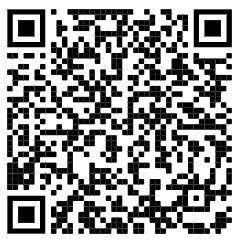
Classroom Management: Best Practices for School Counselors
By Emily Goodman-Scott, Ph.D. | September 2022

At the start of an airplane flight, the flight attendants remind us how to stay safe, usually quickly and routinely, sometimes even reading directly from the instructions. Despite many flights, I couldn’t tell you the details of what they shared. Something about floatation devices and masks? However, I recently had a different experience. When sharing their safety information, the flight attendant joked and sang, and passengers clapped and laughed. What a change! And did I remember the details from this last flight attendant? Absolutely. But what was the difference? While all flight attendants shared the same safety content, the difference was their delivery – not what they shared, but how they shared it. This is similar to our work as school counselors. Is the content of our classroom lessons important? Of course. Equally important is our classroom management: how we deliver the content of our lessons.
Here are some strategies on school counseling classroom management.
And now as a faculty member, I developed and teach a class on school counseling classroom management. Our school counseling skills are a work in progress, and I am still learning. We all are. To assist school counselors with their journey, I and Rawn Boulden, Ph.D., created and validated an inventory specifically for school counseling classroom management (also access via the QR code) for your use. This could be a helpful pre/post-test for you to complete and review, or for a peer or your supervisor to use to provide you with feedback and, ultimately, guide your school counseling classroom management in the school year ahead.

For more on classroom management, see our articles in Professional School Counseling:
Emily Goodman-Scott, Ph.D., is an associate professor, graduate program director and school counseling coordinator in the Department of Counseling and Human Services at Old Dominion University in Norfolk, Virginia. Contact her at egscott@odu.edu.
Here are some strategies on school counseling classroom management.
Indirect Classroom Management: Planning for Lessons
- Removing Barriers and Changing Systems
First, look at your school: What is going well? What are challenges? How is data collected and disaggregated? Who benefits from school policies, and who is harmed? How can you change systems to ensure all students have access to opportunities? As you answer these questions, use this information to guide the content of your lessons and your classroom management. - Ensuring Culturally Sustaining, Affirming Practices
As we create our plans and lessons for the year, we must first ask ourselves, “Am I inviting and prioritizing the voices of my students, their families, and local communities?” For far too long, K–12 education has been based in “culturally neutral” practices – which means practices based on the dominant cultures in our society. Instead, how do we ensure all our students and families are represented? And further, that their cultures are sustained and affirmed, or brought into the school and celebrated. This can include advisory councils specifically for students, and for family and community members, to guide our school counseling practices, including lesson content and classroom management strategies. - Prioritizing Relationships
As a school counselor, do you know your students, including their strengths and areas for growth? How can you use humor and appropriate self-disclosures to deepen your relationship? For instance, as an elementary school counselor, I started each lesson talking about my small dog, Scottie-Scott. I brought in pictures of him dressed as a chicken, chasing his favorite ball and sleeping in the sun. The students loved my dog stories, which helped them connect with me on a personal level. What can you share of yourself that helps you connect to your students and makes you more approachable? - Creating Support from Partners
To create lasting change, school counselors must work in tandem with the other adults in our students’ lives. For instance, we can incorporate feedback from and encouraging involvement with families and teachers, such as sharing information on lesson content. We can offer strategies for how families and teachers can follow up on that content.
Direct Classroom Management: During Lessons
- Teaching and Reinforcing Behavioral Expectations
Whether your school has school-wide MTSS expectations (e.g., Be Respectful to Self, Others, and Property), or classroom expectations and behavioral procedures, consider incorporating these into classroom lessons instead of reinventing the wheel. For instance, I would start every year by reminding students of school/class expectations, then asking them to define these expectations for the school counseling classroom lesson specifically. What does it mean to Respect Self, Others, and Property during a school counseling lesson? Definitions from students increases their buy-in, prioritizes their voice and supports culturally sustaining practices. - Developing and Teaching Predictable Routines
Students thrive on routines, so what predictable routines can you build during your classroom lessons, that you implement each lesson? Students loved when I started lessons with a quick story/picture of my dog Scottie Scott to build engagement and use humor. The students and I also began each lesson with a chant that reinforced the behavioral expectations we had created together. I reminded the class that they could earn points during my lesson, and for achieving five total points as a class, they would earn a class-wide incentive for the last 3–5 minutes of my lesson (incentives were developmentally appropriate and desired – a game, technology time, free time, etc.). - Keeping Students Moving and Modifying Modalities
In teaching graduate students, a mentor recommended changing the modality of my teaching every 15 minutes – from lecture to small-group discussion, to a movie clip, to responding via technology, to writing responses, to a role play, to asking for a choral/group response, etc. If we should change the modality every 15 minutes for adult learners, what is appropriate for K–12 students? It is important to understand your students’ developmental needs and attention span: How long can they focus on one task? When should they move to a different part of the room or engage in a different modality/type of learning? Not only are we differentiating by grade level and age, but also based on students’ needs. How are we offering more support for students who need extensions/more advanced content? How are we supporting students in our lessons with 504s and IEPs? How are we ensuring our content resonates and represents gender-diverse and multilingual students? Thus, what different modalities of engagement can you use throughout your lesson, and how are you structuring the pace of your content to be appropriate for students’ development and a range of identities/needs? - Supervising Students: Giving Behavior-Specific Praise, Scanning the Room and Using Proximity
As a previous special education teacher, I learned that for every one instance of corrective feedback, we should give at least four positive statements. The majority of our feedback needs to be positive, expressing our genuine care and understanding for our students. This praise also needs to be behavior specific. Instead of a “Good job, Jacob,” try, “Thank you for writing in your agenda, Suelle” or “Thank you for raising your hand to share, Jalisa.” Throughout our lesson, we are scanning the room to be constantly aware of the dynamics or climate, and using proximity to assist in our feedback and monitoring. For instance, if a small group of students is chatting while I am facilitating a lesson, I would continue with my instruction/lesson while walking toward the chatting students and standing next to them. It can make quite a difference to move closer to students who are veering off task, and give them a friendly yet firm smile. And maintain specific feedback in the process: “Thank you, James, for journaling your response to the reflection question.”
Next Steps
There is no perfect classroom management, but rather a process of trial and error – and growth. Although most school counselors didn’t receive training in school counseling classroom management, we can all learn, and we can improve. I watched for teachers in my building who appeared to have positive and effective classroom management, and I observed their strategies, applying what was related to school counseling. I also read books, attended trainings and taught myself.And now as a faculty member, I developed and teach a class on school counseling classroom management. Our school counseling skills are a work in progress, and I am still learning. We all are. To assist school counselors with their journey, I and Rawn Boulden, Ph.D., created and validated an inventory specifically for school counseling classroom management (also access via the QR code) for your use. This could be a helpful pre/post-test for you to complete and review, or for a peer or your supervisor to use to provide you with feedback and, ultimately, guide your school counseling classroom management in the school year ahead.

For more on classroom management, see our articles in Professional School Counseling:
- Enhancing Student Learning by “Building a Caring Climate”: School Counselors’ Experiences with Classroom Management
- Development and Validation of the School Counselor Classroom Management Inventory
Emily Goodman-Scott, Ph.D., is an associate professor, graduate program director and school counseling coordinator in the Department of Counseling and Human Services at Old Dominion University in Norfolk, Virginia. Contact her at egscott@odu.edu.